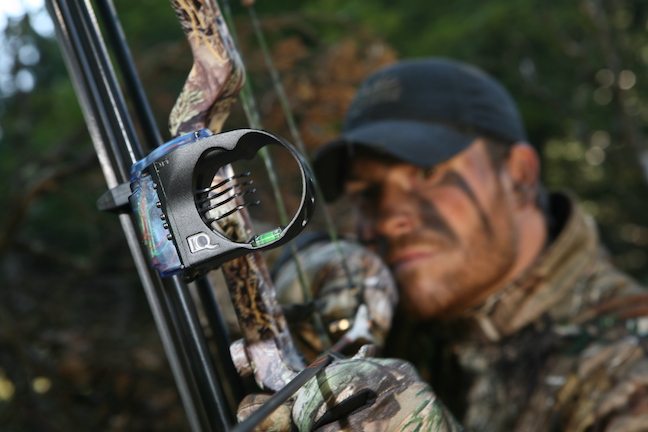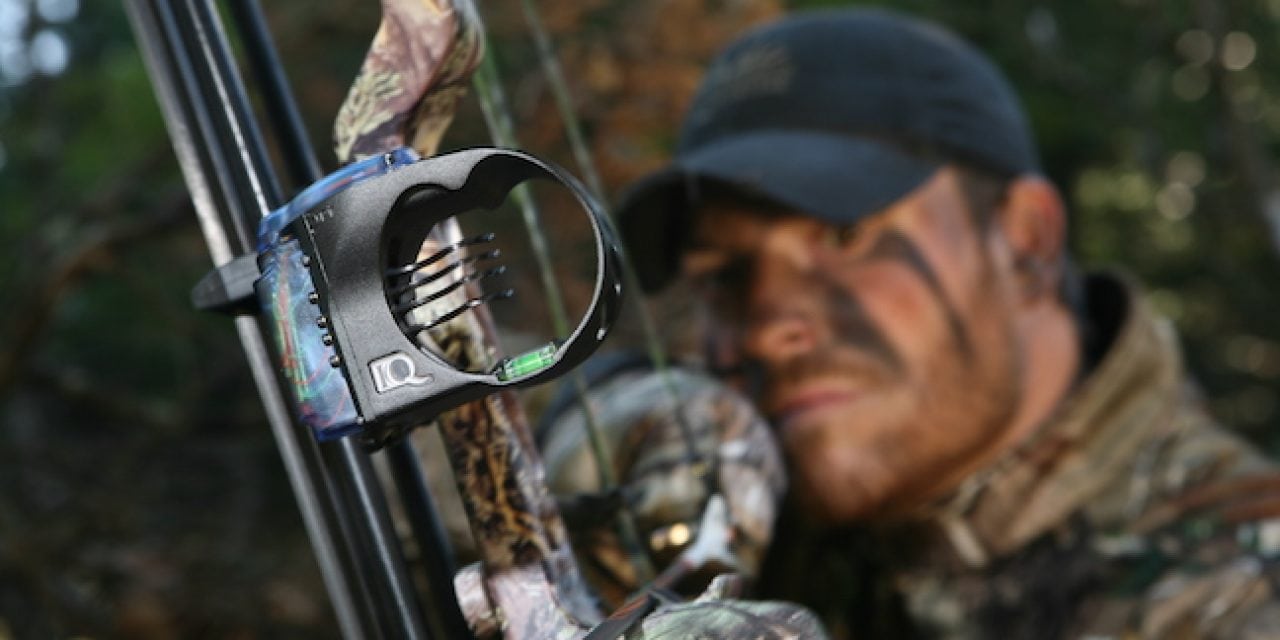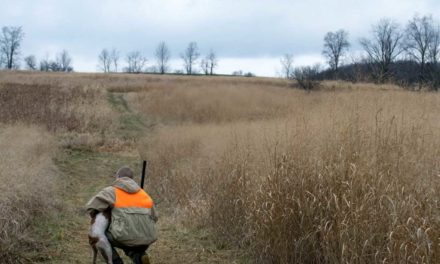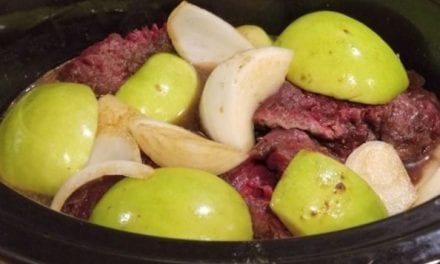The first opportunity to pursue deer each year is with a bow, and Mississippi has many places for deer bowhunting. In fact, there are some locations where only bowhunting is allowed.
Every year, bowhunters in the Magnolia State dole out wads of cash on the latest models of tree stands, scent elimination products, camouflage patterns, calls, scents, high-tech bows, arrows and broadheads — anything that will hopefully provide an edge at taking a trophy whitetail. Then in late summer hunters head to favorite hunting grounds to set up tree stands, prepare food plots and scout.

Magnolia State bowhunters are blessed with one of the longest deer seasons in the nation. (Photo by Ron Sinfelt)
On opening day, hunters perform scent elimination and head to stands, with anticipation flowing as the orange glow of the morning sun begins peeking above the horizon and the woods awaken with the sights, smells and sounds of the outdoors, reminding them of the joys of hunting.
Every rustle of leaves and crack of branches brings thoughts of a trophy, even though more often than not it is just a squirrel in search of an acorn. This scenario plays out every season for many hunters, sometimes making them question tactics that were so certain prior to the season.
Magnolia State bowhunters are blessed with one of the longest deer seasons in the nation.
While the archery-only deer season in the Delta and Hill Deer Management Zones opens on October 1 and runs through the Friday before Thanksgiving, stick-and-string hunters can continue without a break until the regular season ends on January 31.
In similar fashion, deer hunters in the Southeast Deer Management Zone can hunt with bow and arrow from October 15 until the season closes on February 15. Therefore, archers hunting in multiple deer management zones can legally chase Mississippi whitetails for a total of 4 1/2 months, or 138 days straight.
And even though a lengthy deer season doesn’t hurt, successful bowhunters depend on pre-season preparations and implementing an effective hunting strategy to consistently bag bucks. Of course, the first step to any effective hunting strategy is determining the hunting location that offers the best opportunity for success.
Fortunately, Mississippi has an abundance of outstanding white-tailed deer habitat available for public hunting, providing more than 2 million acres of wildlife habitat for public hunting in the form of 11 national wildlife refuges, six national forests and 50 wildlife management areas.
And even though quality deer hunting can be had at any of the national wildlife refuges and national forests, the Magnolia State’s intensely managed WMAs offer up the best opportunity for hunters to bag a whitetail most seasons.
More from G&F on Bowhunting
- Hunting Bows: Which Option Works for You?
- Tag Your Bow Buck Early: Here’s What to Do
- Bowhunting Can Expand Your Deer Skills
Comprising 665,000 acres of prime habitat, these 50 WMAs have some of the Magnolia State’s most beautiful landscapes. Strategically scattered across the state, the WMAs provide an abundance of opportunities for deer hunters opting to take advantage of public lands. In fact, regardless of location, hunters are never more than an hour’s drive from at least one WMA.
The Mississippi WMA system is expansive and diverse, encompassing an area more than 1,000 square miles in size across all eight of the major physiographic regions of the state.
They reach all the way from the upper edge of the coastal marshes in Jackson County to the foothills of Tishomingo County. They range from the rolling hardwood hills of southwestern Mississippi to the deep, fertile soils of the Mississippi Delta.
The Mississippi Department of Wildlife, Fisheries, and Parks owns some of the WMAs, while others are managed under a memorandum of understanding with the U.S. Forest Service or private corporations. More are operated through long-term license agreements with the Corps of Engineers. While some public lands are better than others, all can be found at www.mdwfp.com.
COPIAH COUNTY WMA
For years, Copiah County WMA near Hazlehurst was the shining star of the southwest region when it came to public land archery deer hunting. Unfortunately, Copiah County WMA has been eclipsed in recent years by the Magnolia State’s newest WMA — Canemount. However, Copiah County WMA still posted some exceptional harvest numbers last season.
Even with a very poor deer harvest statewide during the 2016-2017 deer season, it still only took 51 man-days per deer for hunters at the 6,583-acre WMA to harvest 92 deer last season, with archery hunters spending 79 man-days per harvested deer.
Copiah County WMA is one of the most intensely managed WMAs in the Magnolia State for multiple wildlife species, but especially for white-tailed deer. And even though this non-draw WMA will never compete with the premier permit-only WMAs that can be found across Mississippi, this moderate-size WMA consistently produces deer harvest numbers that are the envy of its non-draw WMA counterparts.
Despite Copiah County WMA’s location a short drive from the metropolitan area of Jackson, MDWFP biologists consider the wildlife management area to be one of the most underutilized archery WMAs in the state.
CHARLES RAY NIX WMA
Taking all factors into account, Charles Ray Nix WMA is the top non-draw deer producing WMA in the northeast region. During the 2016 archery season, bowhunters on this WMA harvested twice as many whitetails as any other WMA in the region that doesn’t require a draw permit. But the factor that really put this 4,000-acre WMA in Panola County at the top was the fact that it took far fewer man-days (23) for hunters to harvest deer in a year when harvest numbers were down statewide due to a massive acorn crop.
Charles Ray Nix WMA offers a large amount of open ground and stands of upland hardwoods. Prescribed burning is used to a large extent, along with designated areas planted in supplemental forages that benefit deer tremendously.
LEAF RIVER WMA
Much like Charles Ray Nix WMA in the northeast region, a single WMA stands out above the rest for archery deer hunting in the southeast region. Leaf River WMA, located in Perry County, reported a much higher archery deer harvest on its 41,780 acres last season than any other WMA in the region. In addition, it only took hunters an amazing 27 man-days per deer to reach this harvest. Pascagoula River WMA offered up the second best harvest numbers of the seven WMAs found in the southeast region, but its 86 man-days per archery deer harvested was no threat to Leaf River WMA’s numbers.
Located within the DeSoto National Forest near Wiggins, Leaf River WMA is one of the most storied WMAs in the Magnolia State. Its rich history and excellent hunting opportunities make it a strong draw for south Mississippi hunters.
Similar to the other WMAs in the southeast region, Leaf River WMA consists mostly of pines with a few hardwoods to be found along the scattered creeks and drains on the property. Annual prescribed burns conducted by the U.S. Forest Service continue to improve deer habitat, and a number of wildlife openings planted in supplemental forages can be found scattered across Leaf River WMA.
CANEMOUNT WMA
During the 2016-2017 deer season, deer hunters at Canemount WMA took 57 whitetails with an amazing 10 man-days per deer in hunter effort overall, while bowhunters only required 13 man-days per deer taken. Despite being the smallest of the top-deer producing WMAs in the Magnolia State, Canemount WMA’s 3,500 acres recorded the highest number of deer harvested per acre with the least amount of hunter effort, under a very limited draw hunt that allowed archery and primitive weapon hunting only.
Located near the historic town of Port Gibson in the Loess Bluffs of Claiborne County, where the waters of Bayou Pierre merge with the mighty Mississippi River, Canemount WMA is the pinnacle of the Magnolia State’s WMAs. Compared to other WMAs, Canemount offers a completely unique hunting experience. With its deep and fertile soils, incredible stands of cherrybark oak, managed pine plantations and numerous wildlife openings planted in supplemental forages, Canemount has all the ingredients for a white-tailed deer herd to thrive.
Canemount Plantation, from which Canemount WMA was created, has a long history of trophy deer management. Since 1991, the previous owner worked with MDWFP biologist and Mississippi State University researchers through the Deer Management Assistance Program (DMAP) to facilitate quality deer management on the property. Once managed as a commercial hunting operation in the shadows of the historic Windsor Ruins, Canemount’s previous owner wanted the public to be able to continue utilizing the property for that purpose.
The Commission on Wildlife, Fisheries, and Parks viewed the acquisition of Canemount as an excellent opportunity to acquire a unique property that was intensively managed for wildlife for more than 30 years. MDWFP’s goal has been to implement policies and a management program to ensure Canemount would be self-sustaining. All the fees associated with the hunting at Canemount were calculated in order to achieve this goal of self-sustainability. Canemount WMA is a true example of the type of success that can be achieved with a common vision.
Whether planning to hunt Canemount WMA or one of the other outstanding Magnolia State WMAs, it is very important to learn and know the rules and regulations at the specific WMAs since they’re not all the same. The season structure and sporting-arm class may vary, and it is the hunter’s responsibility to be familiar with the rules and regulations before heading out to hunt.
The post Deer Bowhunting Hot Spots in Mississippi appeared first on Game & Fish.
















